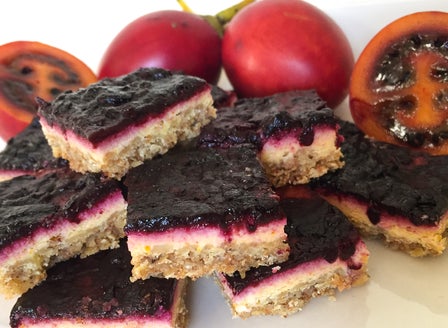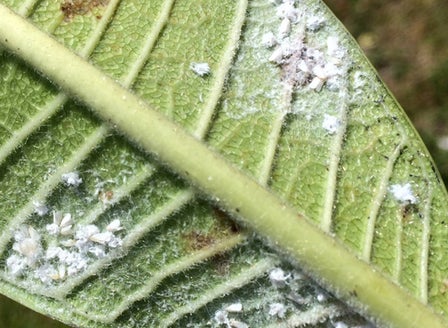Tasty, tart and tangy Tamarillos (also known as tree tomato) are delicious and often used to make Jams, Jellies, Chutneys. The flavour of Tamarillo is well suited to either sweet or savoury dishes. A healthy tree can produce up to 20 kilograms of fruit each season, so it is a good thing they freeze well.
Planting Calendar
Tamarillos are best planted in the warmer months from spring- summer
Harvest In
18-20 Months
Tamarillos will start producing fruit during spring, 18 – 20 months after being planted. This means you will need to wait until the second year after planting for your tree to start producing fruit. Harvesting months are typically between May and August, and you can pick the fruit once it deepens in colour. The depth of colour that indicates ripeness will depend on what variety of Tamarillo you have planted, but the fruit will always have a strong fragrance and be slightly soft when it’s ready to eat. Harvested Tamarillos will last for up to two weeks in the fridge and can be frozen either whole (after being peeled), chopped or pureed.
Prepare
Position
Tamarillos grow best in a sunny sheltered position (the more sun the better) with some protection from winds and frosts.
Soil
When planted into the ground Tamarillo likes a free draining soil that is rich in organic matter. To improve the organic content in your soil, break up the soil and add Kings Compost and Kings Sheep Pellets then mix together well.
Plant
When planting into the ground, gently tap the plant out of its pot. Dig a hole twice the depth and width of the plants root ball. Mix Kings Compost into your existing soil at a 50/50 ratio, add Sheep Pellets and Kings Citrus & Fruit Tree fertiliser, then mix together well. Back fill the hole with this soil, so that when planted the top of the plant’s roots sit level with the surrounding ground. Firm the soil down gently and water in well with Aquaticus Organic Garden Booster. In heavier clay soils, where drainage is likely to be an issue, plant onto a raised mound and sprinkle Gypsum Clay Breaker into the bottom of the hole, this helps slowly condition the soil and will help to break down the clay.
Care
Watering
Watering is essential especially in the first year of planting to allow the roots to get well established. Water slowly allowing the water to sink down into the roots, rather than allowing it to run off the top of the soils surface. Add Saturaid into the soil at planting as this will help channel the water deep down into the root zone.
Feeding
Feed monthly during Spring, Summer and Autumn with Kings Citrus and Fruit Tree food. In addition give your tree a monthly boost with Organic Garden Booster, this helps condition the soil and encourage plant health. A sprinkling of Kings Sheep Pellets will help with soil structure and nutrients.
Protecting
Tamarillo are very sensitive to frost, so protect in winter by covering with frost cloth. Birds love the fruit so as it is ripening cover with bird netting.
Mulching
Mulch around the base of the plants (make sure that the mulch does not come into direct contact with the stem of the plant) with Living Earth More than Mulch. Mulching helps to reduce weeds as well as aiding the soil to retain moisture.
Spraying
White fly and Powdery Mildew are the main issues with Tamarillo. To treat for Whitefly, spray with Bugtrol in the evening every 2 weeks at first sign on infestation. Powdery Mildew is a problem as the temperature warms up and humidity increases. Spray for prevention with Organic Super Sulphur.
Pruning
When the plant reaches one metre high, prune back the top growing tip to encourage branching. Fruit is grown from new spring growth, so prune back hard in the summer.
General Care
When using sprays, chemicals or fertilisers always read the label and follow the instructions. Apply sprays in the evening to avoid harming beneficial insects.
Expert Tip
Adding Saturaid to the soil helps channel water directly to the root zone of the plant, where it is needed.
Top Varieties
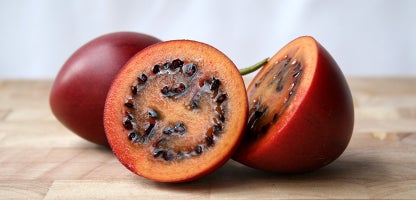
Ted’s Red
This oval, medium-sized fruit is red to orange in colour. It has a full, acidic flavour which makes it perfect for those who enjoy tangy edibles.
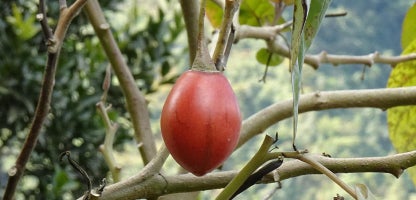
Tango (PVR)
This Tamarillo has low acidity levels, which makes it one of the sweeter varieties available. It has red to orange, medium-sized, oval fruit.
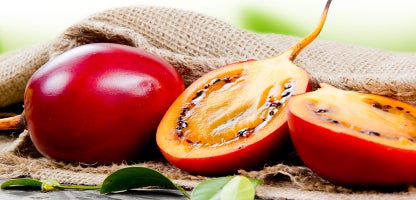
Muligan
Muligan Tamarillo trees have medium-sized fruit, which are deep red inside and out, with a full, acidic flavour
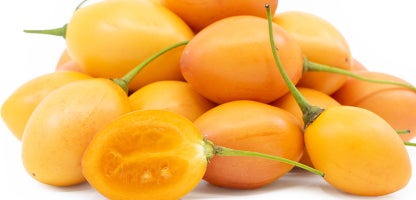
Bold Gold
As the name suggests, Bold Gold Tamarillos produce large fruit with golden skin and flesh. They have a less acidic, sweeter flavour than other varieties.
Frequently Asked Questions
What is the best time to plant tamarillos?
The best time to plant tamarillos is in late spring to early summer, when the risk of frost has passed and the soil is warm.
What type of soil is ideal for tamarillos?
When planted into the ground Tamarillo likes a free draining soil that is rich in organic matter. To improve the organic content in your soil, break up the soil and add Kings Compost and Kings Sheep Pellets then mix together well.
How often should I water my tamarillo plant?
Watering is essential especially in the first year of planting to allow the roots to get well established. Water slowly allowing the water to sink down into the roots, rather than allowing it to run off the top of the soils surface. Add Saturaid into the soil at planting as this will help channel the water deep down into the root zone.
How do I prune my tamarillo plant?
When the plant reaches one metre high, prune back the top growing tip to encourage branching. Fruit is grown from new spring growth, so prune back hard in the summer.
Do tamarillos need fertiliser?
Feed monthly during Spring, Summer and Autumn with Kings Citrus and Fruit Tree food. In addition give your tree a monthly boost with Organic Garden Booster, this helps condition the soil and encourage plant health. A sprinkling of Kings Sheep Pellets will help with soil structure and nutrients.
